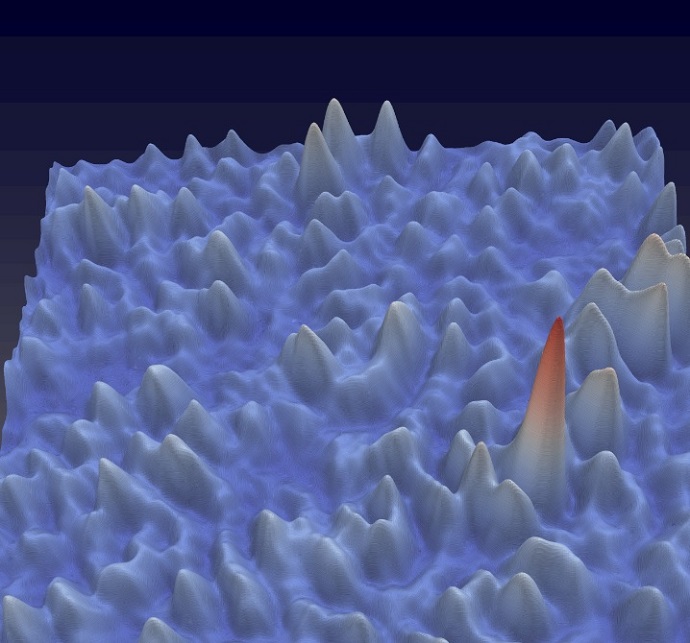9 March 2015
A new study published today reveals a nano-optical chip that makes it possible to generate and control nanoscale rogue waves. The innovative chip was developed by an international team of scientists, including a University of York physicist, and has the potential for significant applications for energy research and environmental safety.
The amount of energy in a tsunami or a tornado is difficult to comprehend. Energy is all around us, but largely contained in a quiet state. There are moments in time, however, when large amounts of energy build up spontaneously and create rare phenomena on a potentially disastrous scale. How these events occur is still poorly understood.
The research team, which included Professor Thomas Krauss, of the Department of Physics at York, studied the natural mechanisms behind such high-energy phenomena, to understand the dynamics of such destructive events and to control their formation in new optical chips. The research is published in Nature Physics.
Dr Andrea Fratalocchi, assistant professor in the Computer, Electrical and Mathematical Sciences and Engineering Division of King Abdullah University of Science and Technology, led the team of researchers from Saudi Arabia and three European universities and research centres.
The scientists developed new theoretical ideas to explain the formation of rare energetic natural events such as rogue waves, large surface waves that develop out of the blue in deep water and represents a potential risk for vessels and open-ocean oil platforms.
They used a planar photonic crystal chip to generate ultrafast and sub-wavelength nanoscale rogue waves. The newly developed photonic chip offered an exceptional level of controllability over these rare events.
Professor Krauss, who was involved in the development of the experiment and the analysis of the data, said: “By realizing a sea of interacting waves on a photonic chip, we were able study the formation of rare high energy events in a controlled environment. We noted that these events only happened when some sets of waves were missing, which is one of the key insights in our study.”
Dr Fratalocchi said: “I have always been fascinated by the unpredictability of nature and I believe that understanding this complexity is the next frontier that will open cutting edge pathways in science and offer novel applications in a variety of areas.
“Our idea was something never tested before! We wanted to demonstrate that small perturbations of a chaotic sea of interacting waves could, contrary to intuition, control the formation of rare events of exceptional amplitude.”
Dr Andrea Di Falco, leader of the Synthetic Optics group at the University of St Andrews which fabricated the chip, said “The advantage of using light confined in an optical chip is that we can control very carefully how the energy in a chaotic system is dissipated, giving rise to these rare and extreme events. It is as if we were able to produce a determined amount of waves of unusual height in a small lake, just by accurately landscaping its coasts and controlling the size and number of its emissaries.”
The project’s outcomes offer novel technological applications in energy research, high speed communication and in disaster preparedness.
Dr Fratalocchi added: “This discovery can change once and for all the way we look at catastrophic events opening new perspectives in preventing their destructive appearance on large scales, or using their unique power for ideating new applications at the nanoscale.”
The paper ‘Triggering extreme events at the nanoscale in photonic seas’ is published in Nature Physics: http://dx.doi.org/10.1038/nphys3263













